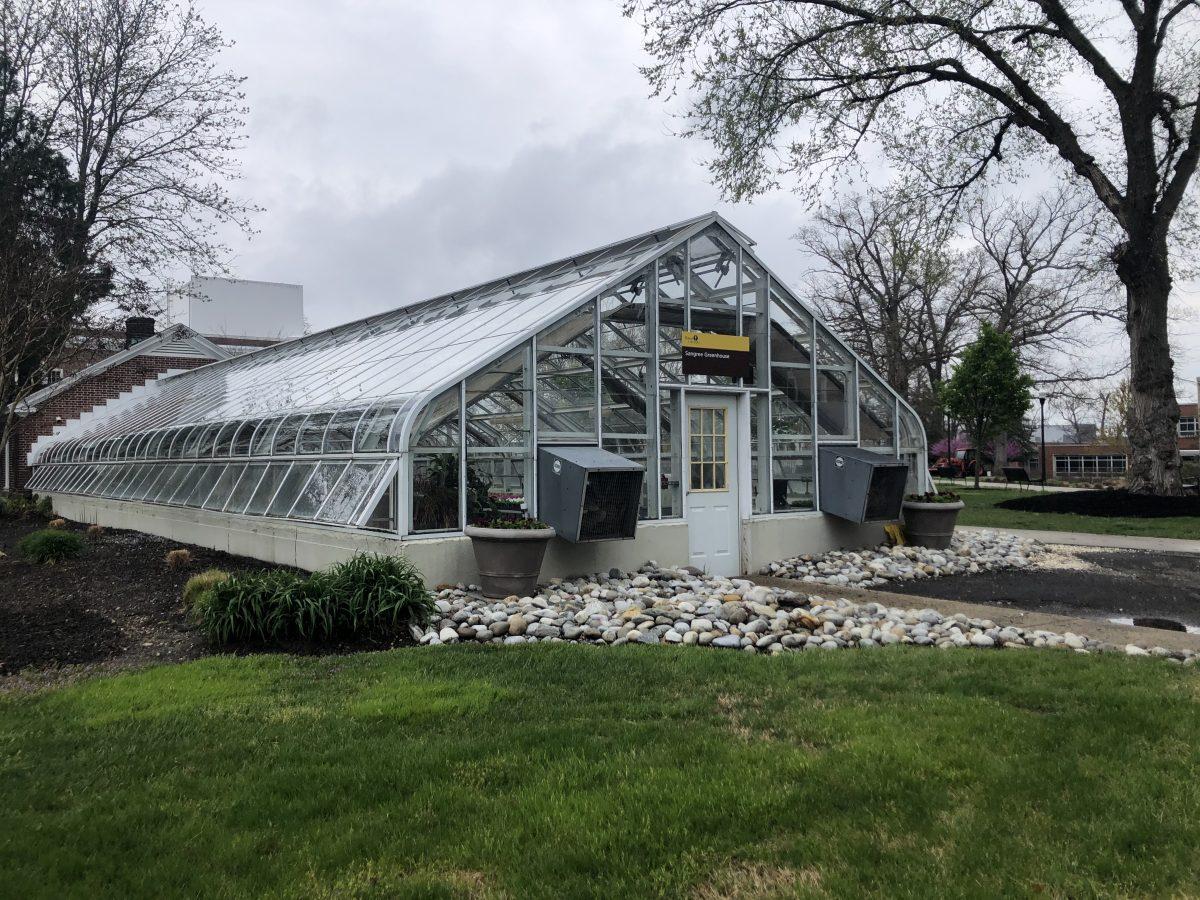Rowan University, known as Glassboro Normal School at its founding in 1923, has been around for nearly 100 years. Much has changed during this past century for our school, including the curricula offered (from training teachers to now offering 148 degrees), the size of the student body (which has reached nearly 20,000 undergraduates), and even the number of campuses there (Stratford, Camden, and Glassboro).
While the university often touts its present-day accomplishments, the past can be as telling about our community’s values as what we’re doing now.
As most of us know, Bunce Hall is the oldest academic building on campus; it’s used to this day for classes and office space. However, the second oldest structure on the Glassboro campus sits in the shadow of this brick monolith. This glass-paneled building has such an interesting story, it’s a shame that it goes largely unnoticed and underappreciated.
This building is the Sangree Greenhouse. Built-in 1923 for just under $20,000, it was a product of America’s most renowned greenhouse manufacturer, the Lord and Burnham Company. They also built such notable greenhouses as the conservatories at the New York Botanical Garden, the Biltmore Estate in Asheville, North Carolina, and the Phipps Conservatory in Pittsburgh.
While perhaps not as well known as these other glasshouses, Rowan’s greenhouse was considered the top of its class at the time, even being called “the ‘Rolls Royce’ of greenhouses,” according to the spring 2005 issue of Rowan Magazine. It was made of glass, steel, and cypress, which was Lord and Burnham’s early standard of construction.
The greenhouse initially served as a resource for future teachers to learn about science and the environment in several capacities. Students learned about local plants and animals with hands-on experiences: growing weeds to learn how to eradicate them, producing local crops like tomatoes, and keeping small animals in the attached brick headhouse.
They also experimented and studied tropical plants in the greenhouse under the direction of John B. Sangree, one of Glassboro Normal’s original professors and the namesake of the greenhouse. These plants included unusually large lemons, hibiscus, bird of paradise flowers, and bamboo, all testaments to Sangree and his students’ horticultural expertise. The greenhouse also provided plants to landscape the campus.
Aside from being a manual and visual form of learning, the greenhouse served as a classroom for science classes.
The greenhouse thrived under Sangree’s leadership until his retirement in 1958, though it did experience a shift in purpose from an educational to a landscaping resource. It continued to produce plants for landscaping in the following two decades, but it became virtually unused in the late ‘70s, according to Rowan Magazine.
During its period of disuse, Sangree Greenhouse became a safety hazard due to a lack of maintenance and was slated to be destroyed in the mid-1990s so the space could be used for a parking lot – that is, until Judy Burger, an administrative assistant in then-president Herman James’ office, had something to say about it.
Burger began working at Rowan in 1974, frequently passing the greenhouse and admiring it. As a home gardener herself, she appreciated the structure – one of four buildings constructed for Glassboro Normal’s opening – for its age, design, and use.
“I just thought it was the coolest thing,” Burger said.
When she heard the greenhouse was to be torn down, she went to President James and explained to him its historical and structural significance, which prompted him to take the issue to the board of trustees. Upon James’ proposal, the trustees let the building stand for a year, during which time they wanted $100,000 to be raised for renovations.
The fundraising process was arduous and pulled together all parts of the Rowan community, from students, professors, and faculty to alumni who hadn’t set foot on campus in years. Burger paired up with Chester Zimolzak, a geography and anthropology professor, to co-chair the Greenhouse Restoration Committee. Tom Gallia, executive assistant to the president, also played a big role in the push for restoration; while he took care of the behind-the-scenes efforts, Burger led at the heart of the effort, and Zimolzak garnered support from the campus community.
Not only did the community contribute financially to making the restoration a reality, but they used their free time to work on the greenhouse, spending time cleaning up glass and other remnants of its deteriorating state. They also took on small restorative projects to spruce up the greenhouse, including salvaging and refinishing some of the planting benches left over from its heyday.
Through organizing events and selling items like cookbooks, the committee edged ever closer to their goal of $100,000 but was still coming up short. The class of 1962 made the single largest donation of $5,000, and 1965 alumnus Jack Collins leveraged his position as a New Jersey assemblyman to secure $50,000 from the state legislature for the restoration. What finally tipped the scales in favor of the committee was the reallocation of $13,000 from the slated greenhouse demolition, made possible by Gallia’s petitioning.
After raising these funds, the Levy Construction Company was awarded a contract to restore the greenhouse, vowing to make it look like it did when completed in 1923. They used samples and photos to recreate it; the glass top was finished in time for the 1997 commencement ceremonies.
Some differences are present in the restored greenhouse, such as “plumbing for irrigation and a small water garden, retractable shades and ventilation to help with climate control and other modest improvements,” according to the spring 2005 issue of Rowan Magazine.
Since its renovation, which was completed in 2000, the Sangree Greenhouse has served primarily as a center for growing flowers and other plants to use for landscaping the Glassboro campus. It was also the starting place for what has now grown into Houshmand’s Hazardous Hot Sauce, the proceeds of which go toward scholarships for Rowan students. President Ali Houshmand used Sangree as the place to grow peppers from seeds and then transplanted them to his pepper plot on Rowan’s West Campus.
The greenhouse was “recognized by the Glassboro Historic Preservation Commission as having significant historical integrity” alongside Hollybush Mansion, Bunce, the Carriage House, and Laurel and Oak halls, according to university senate meeting minutes from 2004.
Joe Cardona, vice president of university relations and university spokesperson, said the greenhouse is still used by facilities to grow plants for the campus – and will be for the foreseeable future – though specifics vary depending on the time of year. Decorative plants started in Sangree are typically ready for transplantation around campus by the time commencement rolls around, Cardona said.
As this article is published, commencement is only a couple of weeks away. Walking past Sangree now, you can see the flowers being grown for transplantation across campus, just as Cardona said.
Judy Burger, who retired from her position at Rowan in 2003, often takes the time to do just that, to make sure the greenhouse she poured her heart and soul into saving still stands.
“It’s something really special,” she said. “It deserved to stay there.”
For comments/questions about this story, email [email protected] or tweet @TheWhitOnline.
























































































































































!["Working with [Dr. Lynch] is always a learning experience for me. She is a treasure,” said Thomas. - Staff Writer / Kacie Scibilia](https://thewhitonline.com/wp-content/uploads/2025/04/choir-1-1200x694.jpg)









































